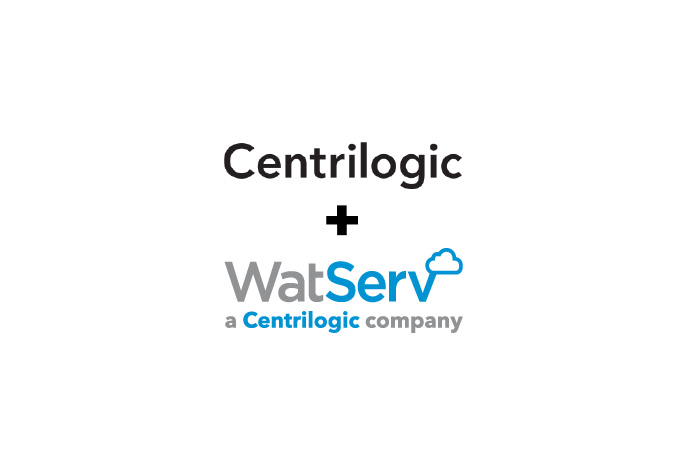What is Disaster Recovery as a Service (DRaaS)?
By WatServ
September 7, 2022
Business operations have changed markedly over the past couple of years. It’s not just due to the influences of the COVID-19 pandemic, but also to the European conflict, extreme weather patterns, increase in cyberattacks and the looming threat of a global economic recession.
As business owners and leaders, these issues may not seem as concerning as they could potentially be. And how often do disasters really happen, anyways? But that doesn’t mean they never happen. It’s in that space between “not often” and “never” that real problems can arise – and potentially can lead businesses to suffer or even fail.
The alarming fact is that only half of all organizations have a company-wide disaster recovery plan. In companies that have experienced a disaster and that have no disaster recovery plan in place, studies have shown that 93% of those companies are at risk of failure within one year of the disaster.
While it’s nearly impossible to stop disasters, there is a lot you can do to mitigate business loss.
That’s where Disaster Recovery as a Service (DRaaS) can help.
In this article, we’ll explain what DRaaS is, how it works, what it can do for your organization, and a few questions to ask when choosing a DRaaS partner.

What is Disaster Recovery as a Service (DRaas)?
Disaster Recovery as a Service (DRaaS) is just what it sounds like: a cloud computing service that provides all disaster recovery planning, forecasting, monitoring, and execution, by allowing companies to backup their data and IT infrastructure to a third party environment. This third party – a DRaaS provider – will perform round-the-clock monitoring and updates.
Think of it as the 24/7 disaster plan that’s always active, always up to date, and is ready to launch into motion as soon as disaster strikes (or even sooner in some cases).
DRaaS includes formulating a disaster recovery plan, replicating entire workflows, company applications and assets, and storing everything in a secure cloud environment. This way, if there is an outage, there is little to no business downtime and losses are significantly reduced. With a DRaaS provider, you have 24/7 monitoring and access to IT when you need it.
How Does DRaaS Work?
DRaaS basically replaces a company’s need to replicate their entire data center and infrastructure on their own, hire their own in-house IT, and/or constantly monitor their own data security.
Because DRaaS is a cloud-based service, your assets can be stored on the DRaaS provider’s server. Therefore, your business won’t have to shoulder the software and hardware investment, along with personnel to manage and monitor your data.
Additionally, a DRaaS provider will have 24/7 monitoring, patch management, and will perform breach tests. They will also work with you to create the best disaster recovery plan for your company.
How Can DRaaS Help Your Business Prepare For the Worst?
A disaster recovery plan may not be front of mind for a lot of companies. As mentioned, only half of all companies have a documented and company-wide disaster recovery plan and even those who do, may not make it a priority. This can lead to outdated plans, increased risk of cyberattacks, loss of valuable assets, and potentially threaten the life and health of the business.
Disaster recovery planning and implementation is absolutely critical for business security and continuity. As disasters have become more frequent, this can result in massive losses for companies that aren’t prepared. Some of those disasters can be:
- Cyberattacks
- Equipment failures
- Power outages
- Natural disasters
A DRaaS provider can help your business prepare for the worst. They are experts who can help mitigate potentially significant loss. They are highly skilled and up-to-date on a wide range of potential disaster risks.
Because of this expertise, a DRaaS provider will usually begin by conducting an audit on your business and expose key potential risks. They will then develop a plan to duplicate your assets, from applications to data to software, and store this on remote servers.
DRaaS providers will also continually monitor and update your plan, including continual backups and fixing patches, and will advise you if there needs to be an amendment to your disaster recovery plan.
What is Typically Included in DRaaS?
While we’ve mentioned some of this above, it helps to create a stepwise plan of what is typically included in DRaaS.
1. Disaster recovery audit
Your DRaaS provider will assess your situation by performing an audit and work with you to create a business continuity plan. They will identify your RPO and RTO.
2. Develop a plan and replicate your assets
Once your business needs are identified, your provider will develop the plan. They will replicate your workloads and data, regardless if they are on-premise or cloud-based.
3. Perform a drill
All disaster recovery plans should be thoroughly tested. Once your plan is in place, your DRaaS provider will run a drill to test your disaster recovery plan and make sure it’s running smoothly and seamlessly.
4. Monitoring and maintenance
Once the drill has been completed and all issues, if any, have been resolved, your DRaaS provider will provide ongoing monitoring and maintenance to ensure your disaster recovery plan is always effective and up-to-date.
5. Response and recovery
In the event of an outage or a disaster, your DRaaS provider will respond right away and set your disaster recovery plan into motion. They will work with you to reduce or eliminate any business downtime as a result of the disaster, and help your business recover.
How to Choose a DRaaS Provider?
Choosing the right DRaaS provider is just as important as your disaster recovery plan. Here are a few things to consider when making your decision:
- Does the DRaaS provider offer backup software with file syncing capabilities?
- How will your apps be accessed if disaster strikes?
- If a VPN is used during recovery, who manages this?
- What strategy does the DRaaS provider use to backup your data? (.g. three copies of your data; one in production and two backups)
- How well will the DRaaS services integrate with your current workflows and environment?
- What is the division of responsibilities during a disaster?
- What support will the DRaaS provider offer during normal operations?
- What support will the DRaaS provider offer during and after a disaster?
These are just a few of the questions that you might want to ask, and an effective DRaaS provider will be able to answer them and more.
Work With an Effective DRaaS Partner
Working with an effective DRaaS provider is just as important as finding the right business partner. The job of a DRaaS provider will be crucial to the ongoing success of your business.
WatServ is a trusted DRaaS partner, working with companies to develop, implement, test and monitor disaster recovery plans. Learn more about WatServ’s DRaaS solution here.
About
WatServ is an IT solutions provider that helps organizations digitally transform through cloud technologies and managed services.
Serving clients as a trusted advisor since 2006, WatServ provides experience-tested, strategic solutions across all stages of the digital transformation journey. Clients choose WatServ to migrate infrastructure and applications to the cloud, secure critical data, implement disaster recovery, deploy virtual desktop, enable data-readiness for productivity solutions and manage IT environments.
Our clients span a broad range of industries, and we’re a global supplier of IT services for many Brookfield Portfolio Companies. To help our mid-size clients, we provide scalable offerings that simplify cloud adoption and drive business optimization. For enterprise clients, we co-create cloud solutions that enable stability and efficiency for complex IT tools and processes.
With more than 15 years of experience, WatServ has a track record of delivering quantifiable business results and a superior client experience. Ranked as one of Canada’s Top 100 Solution Providers for the last three years in a row, WatServ is always on.

